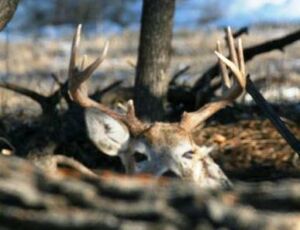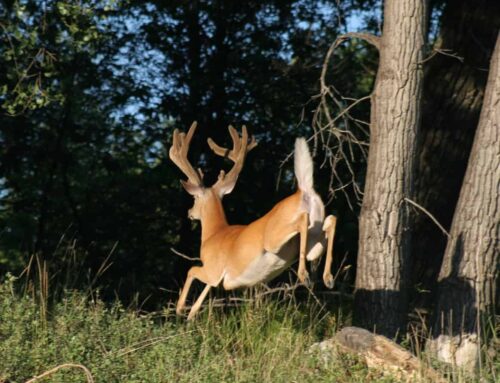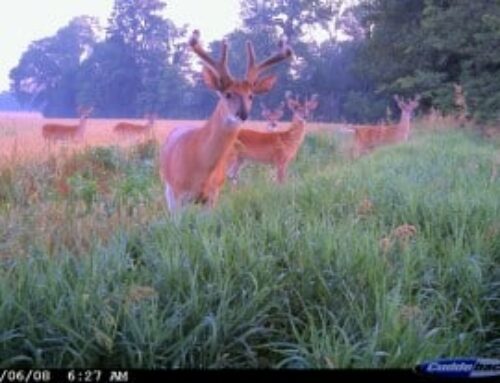 I am sitting here thinking back about what went right and what went wrong last season. The best memories are of the few days when I shot a buck on TV, but I will learn the most by replaying and analyzing all those tough and lean days and weeks when I didn’t get a deer. How did I mess up? What could I have done differently?
I am sitting here thinking back about what went right and what went wrong last season. The best memories are of the few days when I shot a buck on TV, but I will learn the most by replaying and analyzing all those tough and lean days and weeks when I didn’t get a deer. How did I mess up? What could I have done differently?
Map and Scout
A buddy called last October and said, “Hey man, I got permission to hunt a new farm, you in?”
“Let’s go!” I roared and off we went for a week. We hunted like mad, had fun, saw some deer but came home empty-handed.
We should have slowed down and scouted a day or two or a week from home and before we ever stepped foot on the farm.
If you’ll hunt new ground this fall, obtain maps and aerial photographs, and/or up the property’s coordinates on an app like OnX Hunt. Spend time studying the lay of crop fields, woods and edges; look for a burn, cutover or power-line cut where whitetails will feed and mingle.
Check for the best cover—grown-up fields, cedar stands, beaver swamps and the like. Ridge thickets that overlook crop fields or creek bottoms are especially good places for bucks to bed.
Search for strips of woods, hollows, cover-laced streams and other funnels that connect feeding and bedding areas. Mark potential stand sites in and around those travel corridors.
It’s pretty simple. By studying maps in your den, you can eliminate up to 50 percent of marginal habitat before you ever leave the house. Then you’re ready to load up, drive out and initiate a smart ground game in spots where deer will be active.
Hunt Terrain, Not Sign
Day after day for a week last fall in Virginia, I fell into the trap of watching a set smoking-hot scrapes on a ridge. I saw a few deer, but never a shooter buck.
Your strategy for this season should be: Don’t hunt scrapes at all. Now you should still scout and find the freshest sign. But then, read your maps and scout out from the buck rubs and scrapes for 100 to 300 yards. Pinpoint a creek crossing, ditch head or strip of woods—you get the picture—with more fresh tracks and trails in it, and hang a tree stand right there. While a big 10-pointer likely won’t hit those scrapes you found in daylight, there’s a good chance he’ll travel in a nearby funnel any time of day and especially at first and last light. Play the terrain near hot sign to see more shooters.
Get Aggressive When It’s Time To
One day last November I spotted of a nice 10-pointer chasing a doe on a ridge 120 yards away. From the same bow stand the next morning, I saw him again. On the third morning he was gone. What was I doing? I should have moved in on him much sooner!
If you see a big deer rutting on a ridge or in creek bottom one day in November, don’t just sit there and hope he’ll eventually circle around by your stand, move in! He might be gone tomorrow…but then he might be back again, scraping or hassling a hot doe in the same general area. But one thing is for sure, he won’t be around for too long. If you sit back and wait two or three days to move into a hot area, he will leave with a doe, or run a mile to find other hottie. Your simple motto should be: When the rut is on move in for the kill!
See Buck and Kill Him
One December morning I sat in a stick ground blind for four hours without seeing a deer, and I let my guard was down. I caught a flash to the left—giant buck! I froze. He didn’t see me, but just as fast as he had appeared he was gone.
Our granddaddies taught our daddies who taught us to be still and not move a muscle because a big old buck will see you and spook. So naturally, one of our bad habits is to be too timid and tentative when a big deer comes close. Hunters freeze and don’t move a muscle. And a lot of shooter bucks get away, like that 160-incher did to me last fall (I cried).
Train yourself to be more aggressive. You still need to be smart and quiet of course, but you need to be pro-active, too. Keep your eye on a buck as he comes in, slowly shift your body and feet to get into shooting position, get your bow or gun up when his head and eyes are hidden behind brush or a tree. Move slowly and smoothly, but move! Continue to flow with the animal as he creeps closer and closer.
Here’s the most important part. Whether hunting with bow or gun, take the first clear, solid, close-enough shot you have at a buck’s heart/lung vitals. Do not tarry and wait for him to come three more steps, or turn another foot left or whatever. Kill an 8- or 10-pointer now, before he gets wise or something blows up.






Like that last part…take your first good shot!